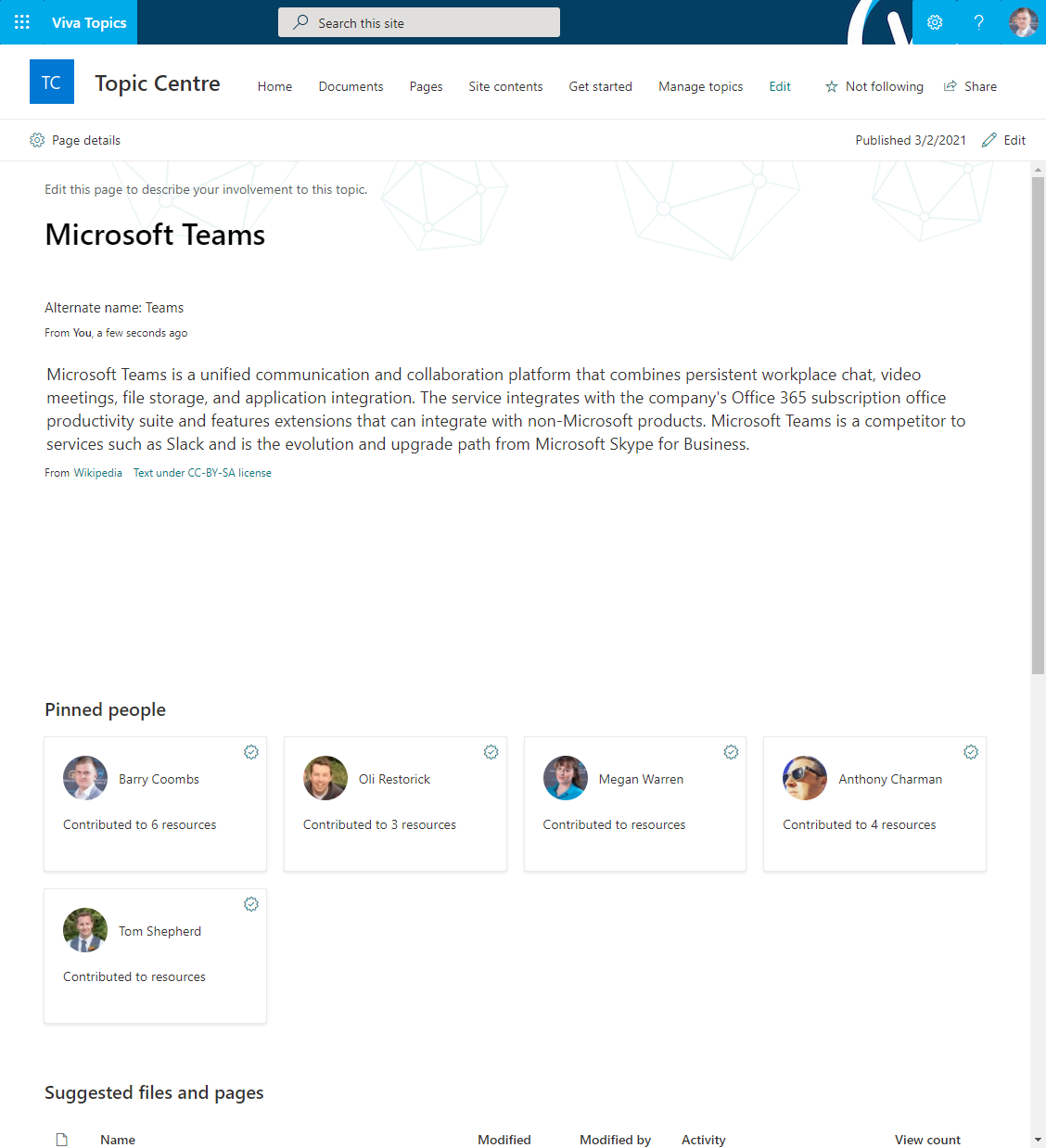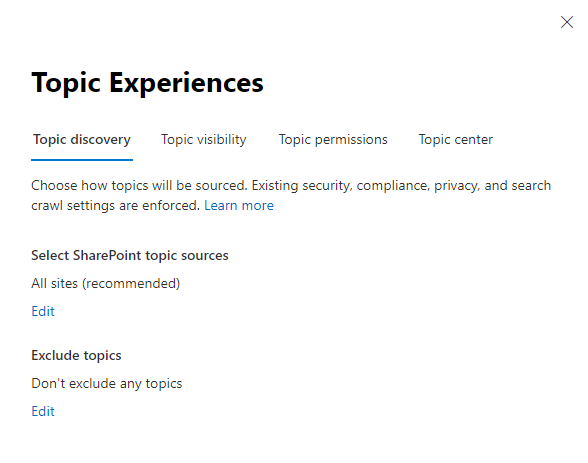Thoughts and Considerations on Microsoft Viva Topics from Hands on Experience
/I am now coming up towards four weeks with Microsoft Viva Topics installed within a production 365 tenant. I have covered my journey and lessons learned in a series of blog posts that you can access at the links below.
Part One: First Look at Microsoft Viva Topics - Licensing and Initial Installation — Define Tomorrow™
Part Two: Microsoft Viva Topics - One Week In, Updates and Thoughts — Define Tomorrow™
As I now approach week four with Microsoft Viva Topics, the suggestions' quality is improving massively, with the suggestions being much more relevant than the first few weeks.
Outside of that, nothing has changed much from my blog post in week three linked at the top of this articl. Ass such, I will use this blog post for summarising my experience for those looking to deploy Viva Topics within their organisation.
What is Microsoft Viva Topics?
Here is what Microsoft Says - Microsoft Viva Topics is an AI-powered solution that discovers, organizes, and surfaces what matters. It automatically organizes content and expertise across your systems and teams into related topics such as projects, products, processes, and customers. People don’t need a separate application or search—knowledge simply finds them in the apps they already use. Experts can rapidly curate and share knowledge through simple, highly customizable web pages.
From my perspective, I would explain Microsoft Viva Topics as an AI-powered wiki for your business, allowing you to quickly and easily curate and view information regarding the knowledge within your organisation.
How does Microsoft Viva Topics Work?
Microsoft Viva Topics is deployed as a SharePoint Site within your Microsoft 365 tenant. Once deployed, it will scan the resources made available to it to suggest Topics with the ability to add a description, people, files and pages, and related sites and topics. You are also able to allow people within your organisation to curate Topics on behalf of the organisation. These topics are quickly and easily accessible linked directly in content created on platforms such as SharePoint. In the future, this will spread into the other Microsoft 365 applications and via API’s into third-party applications.
Who is Microsoft Viva Topics Aimed At?
Microsoft Viva Topics could be a useful resource to organisations of all sizes. Due to its licencing mechanism being an add-on licence for 365, the cost will be comparable for small and large organisations. However, as it isn’t included within any of the Microsoft 365 bundles, it is an extra cost for organisations to consider and maybe a barrier for some.
Viva Topics will be useful to any organisations looking for an easy and integrated way to share high-levels of knowledge held within their organisation. This could be in the form of the information held within SharePoint, such as documents and pages, or helping people find the right person within the organisation to reach out to.
Considerations before you get started
Know what you are trying to achieve!
Microsoft Viva Topics is easily configured to scan all of the information within your Microsoft 365 tenant and start giving you recommendations for Topics a few days later. When Topics are suggested, you need to confirm, edit and publish the Topic pages. You can quickly end up with many hundreds, if not thousands, of suggestions and Topics published within your organisation.
I would recommend starting by thinking about and documenting what types of knowledge you want to make easily discoverable within your organisation. This might be about the products you sell, the services you offer, or the terminology you use within your industry. You will also need to think about who your audience is, as you will want to ensure they are licensed appropriately.
Limit the sites to be discovered
Once you know the knowledge you wish to focus on with Viva Topics, you may wish to configure the Topic Discovery settings to only include the relevant SharePoint sites for discovery.
This is important to ensure that Viva Topics' information is relevant for what you want to achieve. For example, let’s assume you are a reseller of coffee. If you were to let Topics search all SharePoint sites, it could potentially pull back information on the different varieties of coffee from an internal training site, but it could also pull back every time you had quoted a customer for that type of coffee from a client orders site as well as when you ordered coffee from a supplier from a site used to store purchase orders. For some organisations, all of this information may be relevant and what they want in Viva Topics, but for others, they may just want to focus Viva Topics on the information that contains knowledge around the products themselves.
Who is in your team of curators?
Whilst Viva Topics does a great job of discovery, suggesting Topics, people and gathering Topic descriptions from resources like Wikipedia on its own, it probably won’t completely deliver what you need as a business. You will need a team of curators to help you manage the topic suggestion process, edit and publish your topic pages, and manually create the required topic pages.
Give it time!
As I have mentioned numerous times in the blog in the series, from my experience, Viva Topics is really best left alone for two to three weeks once your initial configuration is complete. This will give it time for the topics to be discovered and the quality of these suggestions becoming improved as I mentioned at the beginning.
Conclusion
I have been really impressed by what I have seen with Microsoft Viva Topics. Undoubtedly it can form an essential aspect of an employees experience and their ability to find the knowledge and the people that can help them within an organisation. It is another example of a technology within Microsoft 365 that is an enabler. To be fully implemented successfully will involve a business and user-led team considering how the technology can be configured to meet the organisation's needs. As a technology alone with no business and user-led input, it will create more noise and confusion.
I wish that Viva Topics was part of the base Microsoft 365 packages such as E3 or E5 as I believe the technology could be of great assistance to many organisations. Still, the additional licensing costs will put off some organisations.
Finally, I am looking forward to seeing the greater implementation of the Topic cards appearing in places likes Teams. So far, I have only seen these appear in SharePoint pages when adding the relevant tags to the topic words. I will keep an eye on how that changes over time.









